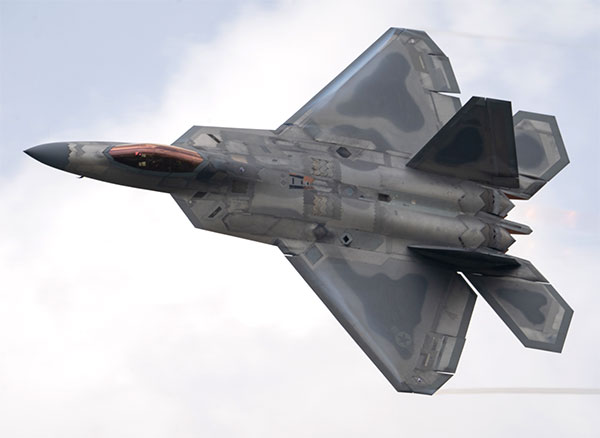How to Pack Your Storage Unit Efficiently
By Space Coast Daily // June 18, 2025

When it comes to renting a storage unit, the main objective is clear: you want to store your belongings safely and with ease of access. But packing a storage unit efficiently can often be more challenging than it seems. If you don’t pack properly, you risk wasting valuable space, damaging fragile items, or making it difficult to retrieve things when needed.
Packing a storage unit efficiently isn’t just about fitting everything in. It’s about making sure your items are stored in a way that preserves them, ensures easy access, and maximizes the space you’ve paid for. Let’s explore some practical tips that can help you pack your storage unit like a pro.
Choose the Right Storage Unit Size
Before you even think about packing, you need to choose the right storage unit size. Selecting the correct size is crucial because you don’t want to overpay for a space that’s too big, nor do you want to overcrowd a space that’s too small.
Think about the items you need to store and how much space they take up. Most facilities offer a variety of sizes, from small units for a few boxes and seasonal items to larger units for furniture and more significant possessions. Consider the volume of your belongings and the layout of the unit. If you plan to access your items frequently, you might need a unit that allows for some walking room.
Gather the Right Packing Supplies
Packing materials are often an overlooked aspect of the storage process, but they’re essential for keeping your items safe. You’ll need sturdy boxes, packing tape, bubble wrap, and markers. Avoid using weak or damaged boxes, as they may collapse under weight or over time.
For items that are particularly fragile, such as glassware or electronics, using bubble wrap or foam padding is a must. Wrapping your items properly can prevent scratches, dents, or even breakage. Don’t forget the markers—label every box clearly with its contents and the room it came from. Not only does this help you keep track of your items, but it also makes it easier to find what you need later.
Create a Plan Before You Start
It’s easy to dive straight into packing, but taking a few moments to plan ahead can save you a lot of time and frustration. Start by sorting your belongings into categories. Group similar items together—books with books, kitchen items with kitchenware, and so on. This approach not only helps you keep track of what’s packed, but it also makes it easier to unpack when the time comes.
Once you’ve sorted your items, create an inventory. Write down everything you’re putting into the storage unit, along with its corresponding box or container. Label your boxes with both the category of items they contain and a general description. For example, label a box “Kitchenware – Glasses and Mugs” instead of just “Kitchenware.”
Maximize Vertical Space
When it comes to storage, stacking is your best friend. But it’s not just about stacking items haphazardly—it’s about stacking them efficiently. Make the most of your storage unit’s vertical space by carefully placing items on top of each other. Begin by placing larger, heavier items at the bottom of the stack. You don’t want to crush fragile items, so be strategic about the arrangement.
Use sturdy boxes that can handle weight, and avoid overstuffing them. It’s also a good idea to use shelving units if they’re available. Shelving helps keep boxes off the floor and organizes items neatly. If you don’t have shelves, pallets work well too. They keep your belongings off the ground, which can be important in case of flooding or moisture buildup.
Prioritize Accessibility
When packing your storage unit, think about which items you might need to access first. Place frequently used or seasonal items near the front of the unit for easy access. This can save you a lot of time when you need something specific, especially if you’re in and out of your storage unit frequently.
For instance, if you’re storing holiday decorations or seasonal clothing, these items should be easy to reach. On the other hand, items you rarely need—like old furniture or winter gear—can go deeper into the unit. This kind of strategic planning makes a big difference when you have to retrieve items later.
Protect Fragile Items
Not everything in your storage unit will be durable. Some of your belongings may be more delicate, and these need extra care when packing. Fragile items like glass, ceramics, and electronics should be properly wrapped and cushioned to prevent damage. Use bubble wrap, packing peanuts, or even old towels to create layers of protection.
When packing fragile items into boxes, make sure they are snugly packed with no room for shifting. If there’s space left inside the box, fill it with more packing material to avoid any movement during transit. You can also place a “fragile” label on the box to ensure careful handling.
Take Advantage of Every Nook and Cranny
You’re paying for storage space, so it’s important to make sure you’re using it efficiently. Take advantage of every available space by filling in gaps and utilizing all areas of your storage unit. For example, furniture can be an excellent space for smaller items. If you’re storing a couch or dresser, place boxes inside it or use the drawers to hold smaller belongings.
Also, look for empty spaces inside boxes. Don’t leave room in a box that could otherwise be filled with soft materials like pillows or clothing. This prevents your boxes from becoming too heavy and makes your packing even more efficient.
Maintain Proper Air Circulation
Your belongings may be stored for weeks or even months, so it’s essential to consider the air circulation inside your storage unit. Without airflow, there’s a risk of mold or mildew developing, especially with items made from wood, leather, or fabrics. When packing, leave a little bit of space between the walls and your boxes, allowing air to circulate freely.
For added protection, consider using breathable covers for large furniture items or appliances. These covers will shield your items from dust and dirt while still letting air flow. You might also want to elevate items like mattresses or couches slightly off the floor with pallets to ensure proper air circulation.
Secure Your Storage Unit
Once your items are packed and your storage unit is full, it’s important to secure everything. A high-quality lock is crucial for keeping your belongings safe. If you’re using a storage facility, look for secure storage units in Houston that offer additional security features such as surveillance cameras or motion-detecting lights.
Make sure the lock is tightly secured to prevent unauthorized access. It’s always better to be overly cautious when it comes to security. Also, if you’re storing particularly valuable items, consider opting for insurance that can provide added peace of mind.
Conclusion
Packing your storage unit efficiently is key to making the most of your space, keeping your belongings safe, and ensuring you can easily access what you need. By following these tips, you can create a system that works for you and protects your items while maximizing the use of the space you’re renting.
Remember that proper planning, organization, and packing materials are just as important as the storage unit itself. Whether you’re storing household goods, seasonal items, or business inventory, efficient packing is essential to preserving the quality and accessibility of your belongings. By following these strategies, you’ll not only ensure your items stay in great condition but also make your storage experience a lot easier.












